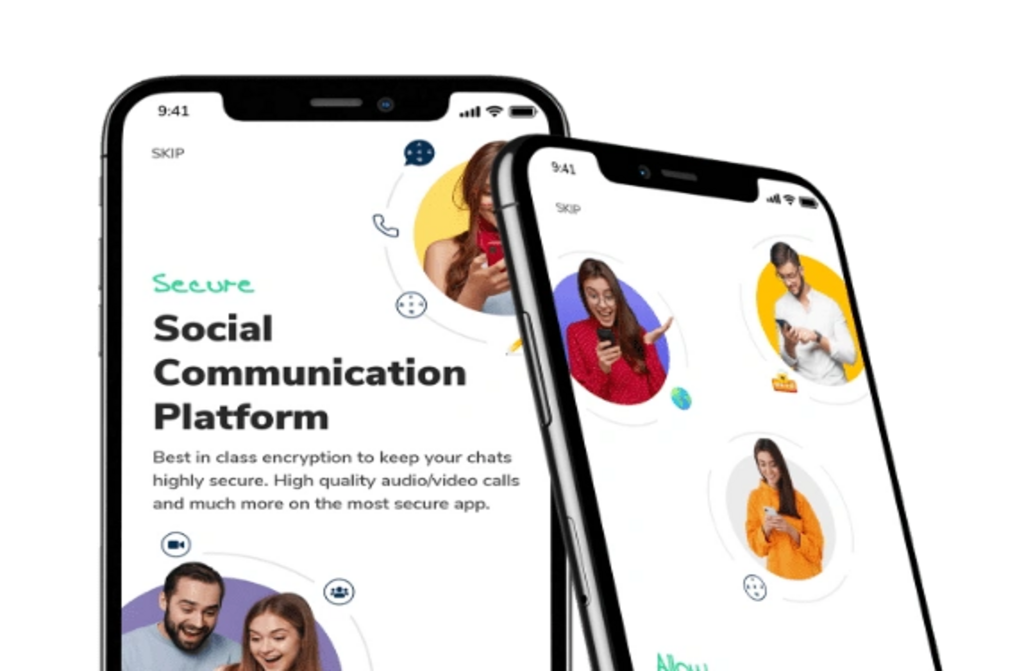Secure communication is more important than ever in today’s ever-changing digital environment. Strong, secret communication channels are becoming more and more necessary as cyber threats get more complex and companies operate internationally. Out of all the technological advancements, secure communication trends have taken center stage in the planning of digital infrastructure for both individuals and enterprises. Significant improvements in protecting our interactions are anticipated in 2025–2026, from enterprise-grade video conferencing solutions to encrypted chat apps.
The Evolution of Technology for End-to-End Encryption
For many years, end-to-end encryption technology has been at the forefront of digital privacy, and its importance will only increase. End-to-end encryption ensures that only the sender and receiver can view the messages, unlike traditional encryption methods. The contents of the conversations are not available for intermediaries, like internet service providers or even operators of a platform, due to this level of protection.
Companies are scrambling to include end-to-end encryption technology in their processes due to increasing awareness of data privacy laws like the DPDP Act in India, the CCPA, and the GDPR. Expect increased use of this encryption method by default across more ubiquitous business applications, including HR and project management software.
The Future of Encrypted Messaging
Its success lies in the future of encrypted messaging. The messaging platforms will now be a part of an extended ecosystem that also encompasses calendars, CRM systems, and task management. Integration with AI will enhance the responsiveness of encrypted messaging so that there can be intelligent responses and auto-suggestions while maintaining confidentiality.
Furthermore, with the end-to-end encryption maintained, messaging platforms will integrate emotion analysis, voice transcription, and multilingual support. Security and convenience have to be balanced, and firms will prefer suppliers who provide both without compromising either.
The Standardization of Secure Video Conferencing Solutions
Secure video conferencing solutions are increasingly needed as remote and hybrid work trends become more prevalent. Although Zoom, Microsoft Teams, and Google Meet have started to enhance their security features, newer platforms are taking it one step further.
Such features as biometric sign-in, face recognition for sign-in and sign-out, and live language translation will all become features of safe video conferencing in 2025–2026—all in an extremely secure environment. Software like Daakia is already headed towards blending AI and multi-language features with layers of safe communication to address the needs of educational institutions and businesses more effectively.
Another innovation is the application of blockchain-based video communication systems. By avoiding the dominance of a single party over the video data, these decentralized systems reduce the risk of security violations.
Encrypted Chat Apps For Business
Platforms that include more than just messaging are required for enterprise communication. The concept of encrypted chat apps for business is developing to add file sharing, task assignment, scheduling of meetings, analytics, and secure text messaging.
Increasing numbers of apps like Telegram and Signal are adapting their platforms for commercial use. The most recent entrants to the market, though, are focusing on particular industry demand. For instance, tamper-proof discussion logs are a feature of applications used by law firms, and healthcare communication apps now include built-in HIPAA compliance checks.
You can expect businesses to move away from consumer-grade messaging apps to encrypted chat platforms that offer corporate features such as audit trails, centralized data governance, and user access controls.
Cross-Platform Communication Security
Cross-platform communication security has become unavoidable in an age where employees work with tablets, smartphones, smartwatches, and desktops. It is not just an option; it is necessary to ensure equal security on all of these devices.
Future communication platforms will employ device authentication along with multi-layer encryption methods to meet this need. The security protocols won’t be different if you switch from your iPhone to your Windows PC. AI will also monitor unusual behavior patterns and immediately detect potential threats, enhancing cross-device security further.
Enhanced encryption features will also be added to browser-based communication tools so safe access can be provided even if employees are using shared or public networks.
Automation and AI in Secure Communication
Artificial intelligence will be crucial when it comes to monitoring secure communication. From auto-encrypting sensitive information to smart threat detection, AI will intelligentize and accelerate systems. For instance, AI will reroute critical information automatically through a secure pipeline or cut off its transmission if a user tries sending it via an unencrypted medium.
Moreover, automation will also facilitate the easy establishment of secure communication frameworks. Plug-and-play secure communication devices that are not demanding in terms of switching settings will be useful to small businesses, which often have no in-house IT staff.
Pressures of Regulation and Compliance
Regulations on data security are being strengthened by governments and regulatory bodies. Compliance-based communication solutions will thus become more popular. Platforms that need manual monitoring will be surpassed by those that offer end-to-end encryption, real-time monitoring, and automated compliance reports.
These compliance standards have a direct correlation to the future of encrypted texting. Companies that fail to comply can face fines, lost information, or damage to their reputation.
2025–2026 Trends to Watch
· Quantum-Resistant Encryption: Standard encryption may no longer suffice in the realm of quantum computing. Post-quantum cryptography applications in business will begin to appear.
· Voice biometrics: This method will become more popular for secure communication platform login and identification.
· Zero-Trust Architecture: Platforms will implement zero-trust models, which verify every user and device at every access point.
· AI that Preserves Privacy: As AI becomes further embedded into communication platforms, better models will ensure that data processing occurs without compromising privacy.
Conclusion: Adopting Secure Communication Trends
It’s clear that innovations in secure communication trends will shape the way individuals and businesses interact online as we transition to 2025–2026. With the fast development of end-to-end encryption technology, the future of encrypted messaging, and advances in secure video conferencing systems, communication is becoming more secure and efficient.
Picking future-proof platforms that currently address security needs is necessary if organizations are to remain in the lead. The future of secure communication looks positive, but only for those who are prepared, be it by using encrypted chat applications for business, ensuring cross-platform communication is secure, or complying with global regulation.
Stay safe, keep current, and let your communication keep pace with the times. If you found this blog helpful, please read our blog on How to Choose the Right Secure Video Conferencing Tool for Your Business. If you want to collaborate with us, Don’t Just Collaborate—Collaborate Securely and Discover Daakia and Connect with us Today!





